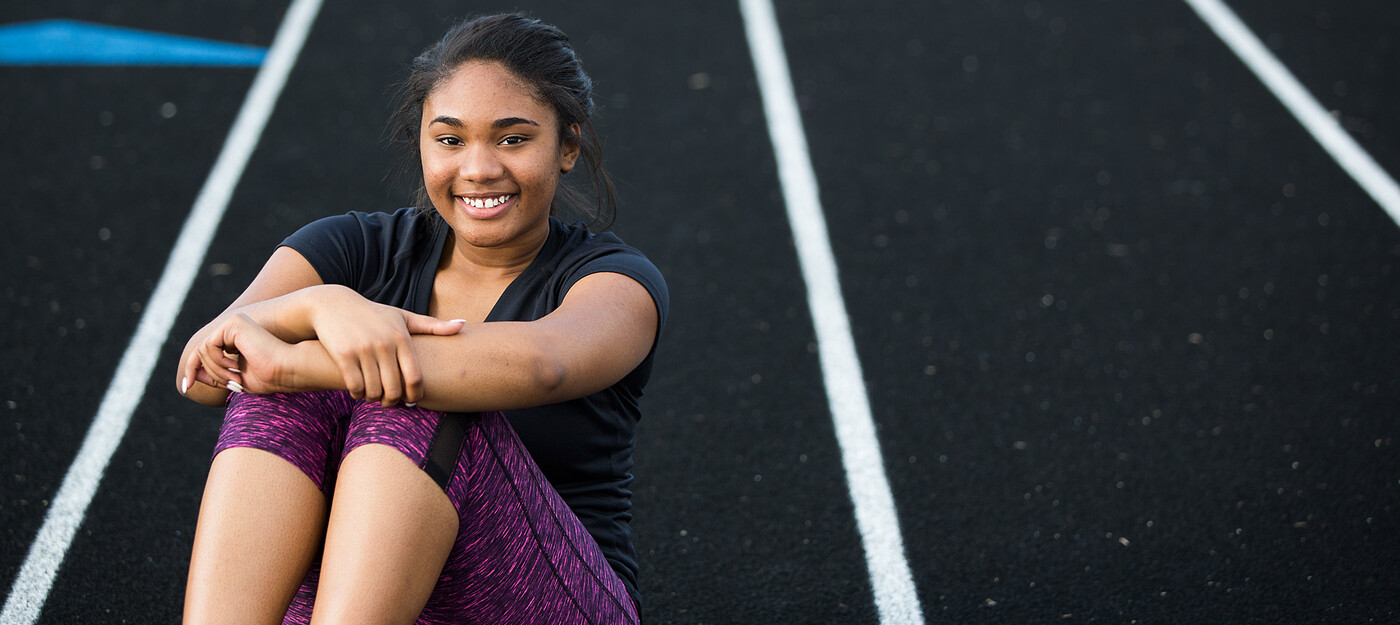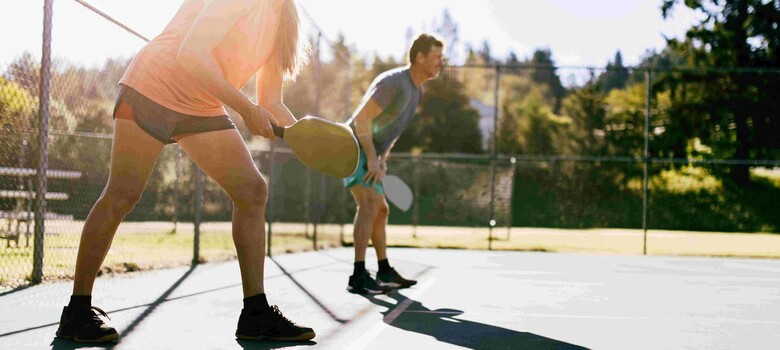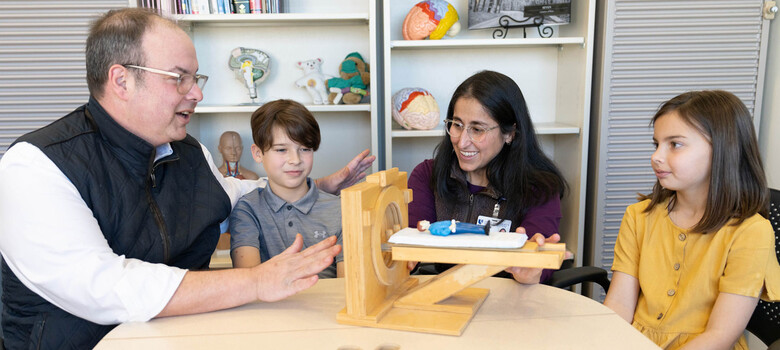 From the DukeHealth.org archives. Content may be out of date.
From the DukeHealth.org archives. Content may be out of date.
Surgery For ACL Injury? Not Always

An ACL tear is an increasingly common injury especially among younger, female athletes. But will it sideline you for good?
Pop Can Signal ACL Tear
When Danielle Fields spotted her daughter D’Nai in the school gym, the 16-year-old was crumpled on the floor, crying. It was her knee, D’Nai told her mom.
During volleyball tryouts, it painfully gave out. Two months earlier, she had felt her knee pop while jumping during track tryouts. That time, ice and rest helped her recover quickly, but this time it was more serious.
“A physical therapist [at the school] said I should take her to an orthopaedic doctor,” Fields recalled. “D’Nai’s a little Supergirl. She will hurt herself and not say anything. I had no idea that there was anything wrong.”
Fields took her daughter to Andre Grant, MD, at Duke Orthopaedics of Raleigh. After examining D’Nai and analyzing her MRI, he gave mom and daughter the bad news: D’Nai had torn her anterior cruciate ligament (ACL).
How ACLs Happen, and to Whom
ACL injuries are increasing, with about 150,000 each year. Although they can occur in males and females of any age, Dr. Grant said these injuries most often happen in younger, female athletes.
“Seventy to 80 percent of the time, ACL injuries are noncontact injuries, caused instead by cutting, pivoting, or twisting, as in basketball or soccer,” Dr. Grant said. “When an athlete decelerates and quickly tries to change direction, the foot remains planted but the knee twists.”

The anterior cruciate ligament is in the front of your knee, inside the joint. It provides stability to the knee and helps control the back-and-forth movement.
It Hurts! Is It My ACL?
Sometimes it is difficult to tell the difference between an ACL tear and other types of injury, say, a strain. Dr. Grant said that if you hear a pop, have a hard time bearing weight on the injured leg, develop swelling, or are unable to continue sports or normal activities, it’s important to seek medical attention as soon as possible.
Some people, like D’Nai after her first injury, find that the pain goes away with rest and ice. But they may notice some continued problems. D’Nai said when she tried to go downstairs, her joint felt funny. “My knee wouldn’t straighten out the right way,” she said.
Dr. Grant believed that D’Nai actually had a complete ACL tear after the track injury but was still able to walk because that didn’t require cutting and pivoting. “When she tried to play volleyball, her knee gave out because of the lack of stability from the ACL,” he explained.
Getting Back on Track
Does an ACL injury mean surgery? Maybe not. If the ACL is sprained but the knee shows no signs of instability, rest and physical therapy may be enough. But for ACL tears in active people, athletes, and children, surgery is usually recommended. “Without a functioning ACL, the overall health of the knee is at risk for further injury,” Dr. Grant said.
D’Nai had a procedure called a bone-patellar tendon-bone graft and said the surgery and recovery were not as difficult as she had imagined. She quickly noticed she could move more easily with less pain. “I went for something and thought, OK, I just did that. My knee is going to be OK.”
Proceed with Confidence
Once a person returns to the same level of sports after injuring the ACL, the same ligament has a 30 percent chance of being injured again, Dr. Grant said. The ACL of the opposite knee has a 30 to 50 percent chance of being injured. For that reason, it’s easy to wonder if a person who has recovered from an ACL tear should even to return to sports. Dr. Grant believes the alternative is worse.
“To ask a child or an adult not to do the sport they love, just in fear of injuring themselves, is not a good thing,” he said. “ACL surgery is successful enough that they can have the confidence to go back and not injure themselves again.”
D’Nai agrees. She looks forward to playing sports again, once she completes three more months of physical therapy. “It’s another way to be healthy,” she said, “but it’s fun because you get to be with your friends, meet new people, and go places.”



